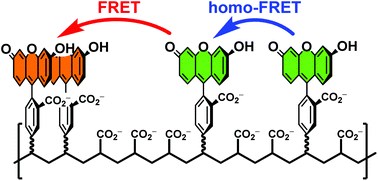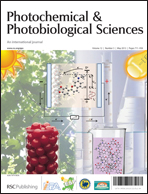Excitation energy migration and trapping on the surface of fluorescent poly(acrylic acid)-grafted polymer particles
Abstract
The surface of poly(methyl methacrylate) particles with different amounts of a grafted layer of poly(acrylic acid) was labeled with varying degrees of an


 Please wait while we load your content...
Please wait while we load your content...